Today is an interview with Wendy Tsao, the artist who founded the home-based business Child’s Own Studio in 2007. Based in Vancouver, British Columbia, Child’s Own Studio was born when Wendy decided to make a softie toy based on a sketch drawn by her then 4 year-old son, Luca. Throughout her years of running the business, Wendy hand made over 700 custom softies from children’s drawings before selling the business last year. She was kind enough to sit down and speak with SevenPonds about her journey.
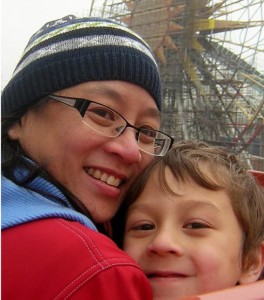
Credit: answers.com
Ellary: I was wondering if you could give a little background on what the company is and how it started?
Wendy: In 2007, my only son, Luca, was starting kindergarten and I wanted to go back to work, but I wanted to find something that I could do at home.
Then my son’s school sent a letter home asking for a comfort toy to put in its emergency preparedness kit. Instead of going to buy something or using one of Luca’s toys, I thought, “Well, maybe I’ll make something.”
It so happened that at that time there was a group of people making their own stuffed toys, called softies, and sharing them on the Internet. I really liked the look of them because they looked so different from the toys in the stores. Some of them even looked like they actually were designed by kids. So I thought, “Maybe I can make a toy based on one of my son’s drawings.” I made it, and when I showed it to him, he got really excited. So I thought, “This is it — this is what I’ll do.”
I didn’t have much experience, so in 2007 I took a self-employment course and began to teach myself how to make stuffed toys. It was a bit slow for the first couple of years, and then in 2011 I started a blog. I also opened a Facebook account that got a lot of attention.
Ellary: Do you try and make the softies look exactly like the drawings that are sent to you?
Wendy: For me, it’s not so important to make it look exactly like the drawing. For me, it’s more important to make the stuffed toy look like the drawing came alive.
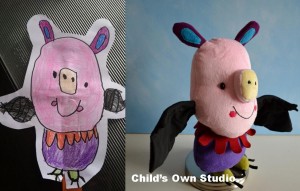
Credit: childsown.com
Ellary: So it’s kind of an artistic collaboration between you and the child?
Wendy: Exactly.
Ellary: A softie seems like a wonderful idea to augment the grieving process for a child who has suffered a loss. Have you had any conversations with grief counselors, parents or teachers about using your softies as a form of art therapy?
Wendy: I had a few email exchanges with therapists about the idea of making a softie as part of therapy. I would love to know the therapeutic benefits of a softie during the grieving and healing process.

Credit: childsown.com
Ellary: Have you ever made a softie from a sketch a child did of a person they lost? Or are they mostly just sketches of creatures or characters the children have drawn that will comfort them going forward after the death?
Wendy: I haven’t done one of a person, but I have made softies of lost pets. I know other softie makers have occasionally made softies based on drawings of lost loved ones, such as a grandparent. I always wondered about the impact or value of a self-designed comfort toy.
Ellary: Grieving parents have asked you to make softies from drawings by their children that have passed away, right?
Wendy: Yes. I think the first time was for a customer in England who lost a son named Rhys, who was 10 years old at the time he passed away. He’d been really into cars and was quite gifted at drawing them. The parents sent me a drawing of a red Ferrari, and they asked me to make a softie based on it. They planned on giving it to the surviving brother, hoping it would help him cope with the loss.
Ellary: Have you made any toys for someone you knew in your personal life, such as for a friend’s child who suffered a loss or had a terminal illness?
Wendy: No. I have made quite a few softies for friends, but I have not had the opportunity to make one for a friend with terminal illness. You have given me a thought, though. I have an acquaintance whose daughter has been fighting cancer (leukemia, I think). I might approach them to see if a softie might be appreciated.
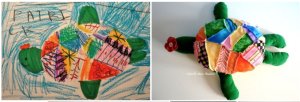
Credit: childsown.com
Ellary: What is the age bracket that you generally get drawings from?
Wendy: They range from between 3 and 12, and mostly between 5 and 9 years of age. I always asked for the age. The more information I had about the artist and the drawing, the better it was. It helped me in the design of the toy.
Ellary: Are all of the drawings you’ve received done by children, or have adults also sent you drawings?
Wendy: You’d be surprised. A lot of adults are also interested in having toys made from their drawings. But I focus mostly on kids’ drawings. With a child’s drawing, there was room for me to have some creative input in the project, whereas when it’s an adult’s drawing it’s slick and all perfectly proportioned. Then I’m just making a toy according to their specs. So it’s just not as interesting to me.
The challenge of using a child’s drawing is to make the toy look good. Sometimes the child’s drawing is actually really well done, and there’s a really great design. But sometimes the child’s drawing isn’t that great.
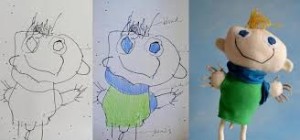
Credit: decopeques.com
Ellary: When you have made a softie from a drawing done by a child who has passed away, have you found that receiving the softie has been comforting for the grieving parent?
Wendy: I believe it has been. I have come to understand that grieving parents have a very different kind of reaction to the softie than the typical reaction. Whereas most children and parents who receive softies based on a child’s drawing feel thrilled, proud and even somewhat empowered by seeing their design realized in 3D, when parents receive a softie based on a drawing by a child who has died, there is bittersweet sadness, and the parents will even cry.
Ellary: It’s such a beautiful and unique memento for a grieving parent to have. Would you be willing to share another story?
Wendy: Yes. I made a toy doll for one lady, Tanya Davis, whose daughter, Gaby Davis, died of cancer when she was seven years old. Gaby had drawn a fairy, and her favorite color was purple, so I made a fairy softie from Gaby’s drawing and gave it a purple dress. I asked Tanya how she felt when she received the toy, and Tanya said it was bittersweet. She cried when she received it because Gaby would have loved it. But at the same time she said she was very happy to receive it, because it celebrates her daughter’s life.
Tanya set up the Gaby Davis Foundation, which supports British Columbian families whose children are fighting the disease. I have donated softies to the Gaby Davis Foundation as part of the “care package” that they provide to BC families whose children are battling cancer.
Ellary: The softies seem like a resource for people that are grieving and want to have some sort of creative outlet and tangible memento that’s really unique. Hopefully more people will recognize these softies as an avenue for doing that.
Wendy: If you personally know anyone who is suffering from a loss or someone who has a terminal illness, I would be happy to work with you to create a softie for this person so that you could find out firsthand how the softie helps (or not). I am free, and I’m open to this kind of research right now.


Drawing by Gaby, 7
(Credit: childsown.com)
Ellary: What is the experience like for you when you’re asked to make a softie from a drawing done by a child who’s passed away? Is it a meaningful experience for you?
Wendy: I always felt honored to make toys for people who lost loved ones. I originally intended Child’s Own Studio to be a place for making toys to make kids happy. So I didn’t expect that I would have situations where I would make toys for people who had lost their loved ones. But the other softie makers I know shared similar sentiments with me. They said it gave depth to their work, which they appreciated.
Ellary: Well, I love the dolls. They look absolutely amazing. So magical. I’m a big fan of what I’ve seen of your work, and thank you so much for taking the time to talk to SevenPonds!
Wendy: Thank you!

 Can A Handmade Softie Toy Be Of Therapeutic Benefit During The Grieving Process? An Interview With Wendy Tsao
Can A Handmade Softie Toy Be Of Therapeutic Benefit During The Grieving Process? An Interview With Wendy Tsao
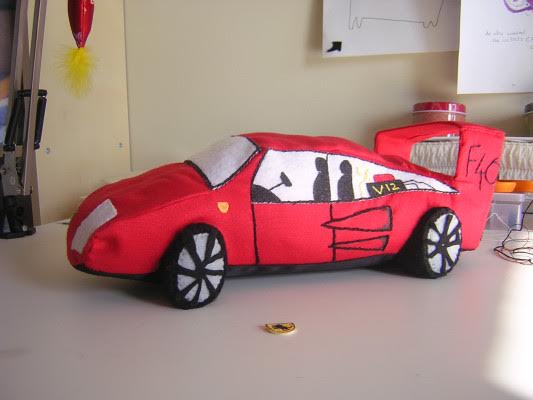


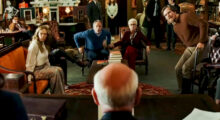
 Having an Estate Plan Is Essential – So Is Discussing It With Your Children
Having an Estate Plan Is Essential – So Is Discussing It With Your Children
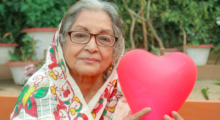
 “Summons” by Aurora Levins Morales
“Summons” by Aurora Levins Morales














